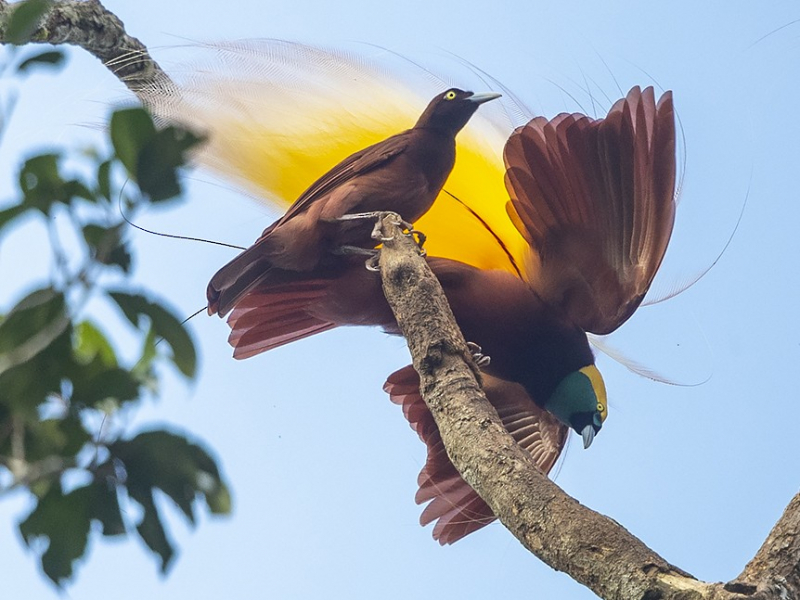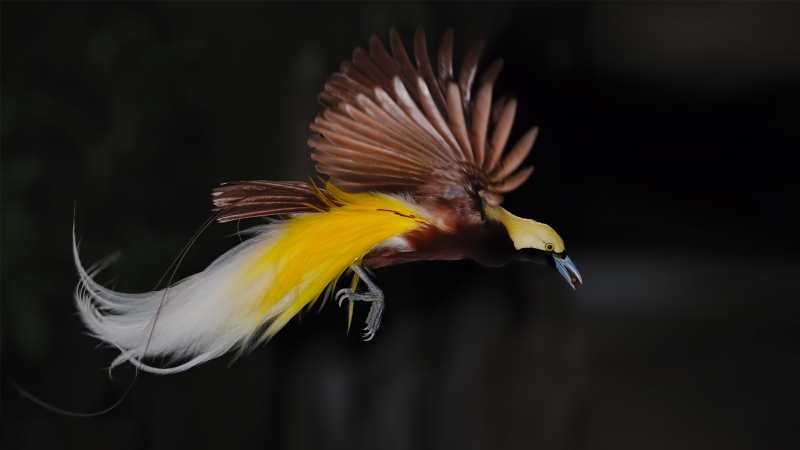Greater Bird Of Paradise
The Greater Bird-Of-Paradise (Paradisaea apoda) is a bird-of-paradise in the genus Paradisaea. Carl Linnaeus named the species Paradisaea apoda, or "legless bird-of-paradise" because early trade-skins to reach Europe were prepared without wings or feet by the indigenous New Guinean people; This resulted in the misconception that these birds were lovely visitors from paradise who were kept aloft by their plumes and never touched the earth until they died.
The largest member of the Paradisaea genus and the bird with the most opulent display is the bigger bird-of-paradise. Males can reach a height of 43 cm (excluding the long twin tail wires). At 48 cm, the female is larger. This species' feathers exhibit sexual dimorphism as well. The male's face is iridescent green, and his crown, skull, and nape are glazed with silver iridescence. The body's remaining feathers are maroon-brown. The flank plumes, which are employed in displays, start out yellow at the base before turning white and having maroon streaks. The female has maroon-brown feathers that are unbarred. The iris and bills are both yellow in both sexes.












